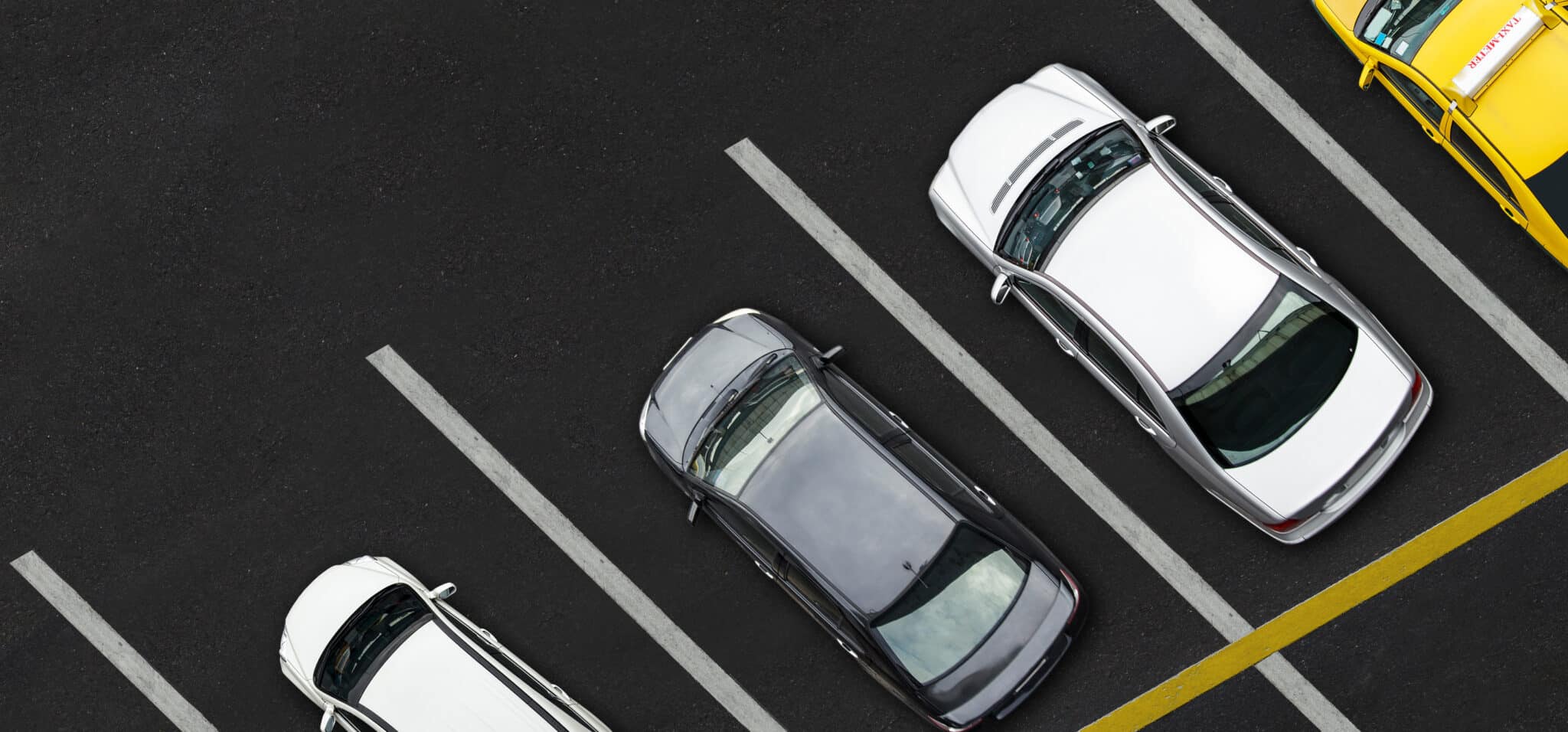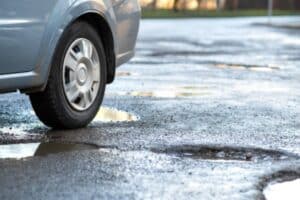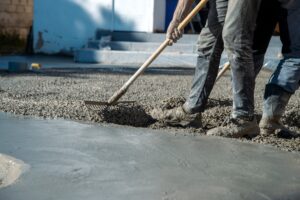One of the most common questions property owners ask is: How long does asphalt sealer take to dry? The truth is, there’s no one-size-fits-all answer—it depends on several factors, including weather conditions, the type of sealer used, and how the surface was prepared.
Asphalt is naturally porous, which means it easily absorbs moisture and other elements. Over time, water can seep into cracks and weaken the pavement structure, while drips of motor oil, grease, or gasoline can cause the surface to soften and deteriorate. That’s where sealcoating comes in.
Sealcoating—also known as asphalt sealer—is designed to protect the pavement from these types of damage. It forms a protective barrier that shields the asphalt from moisture, automotive fluids, UV rays, and daily wear and tear. While sealcoating won’t repair existing cracks, regular application can help prevent them from forming in the first place. It also gives driveways and parking lots a clean, refreshed appearance.
In this post, we’ll break down how long it typically takes for sealcoat to dry, what affects drying time, and best practices to ensure a smooth, long-lasting finish.
What is sealcoating?
First, it is important to understand how sealcoating works. Pavement sealers are used to preserve and enhance the appearance of your asphalt driveway or parking lot. In addition, sealcoating prevents oxidation of the asphalt’s binding, reduces weather damage, lowers maintenance expenses, and extends the life of the pavement.
Read more: What is Sealcoating?
Why sealcoat?
Choosing to sealcoat your driveway or parking lot is a great option to protect the asphalt. In addition, it can extend how long your asphalt lasts and make it look better.
The sun’s UV rays, water, ice, gasoline, and oil erode your asphalt driveway or parking lot over time. Asphalt pavements consist of numerous sized stones, sand, and asphalt cement. The sun’s UV radiation causes the asphalt cement that binds the rocks and sand together to weaken, resulting in brittle gray cracked pavement.
Furthermore, gasoline and oil break down asphalt cement, causing stones to fall out and form potholes. Finally, water penetrates through the porous asphalt pavement and turns into ice, eventually causing fractures.
As a result, sealcoating your pavement regularly will protect it from sun UV rays, prevent gas and oil spill damage, seal water and ice out, and enhance its appearance. Moreover, sealcoating ensures asphalt pavements last longer without the need for expensive repairs or replacement.
Read more: Parking Lot Sealcoating is Vital. Here’s Why…
Best Time to Apply Sealcoating
Before we discuss how long it takes for sealcoating to dry, let us first establish when to do so. The time of application has a considerable influence on the drying speed of the sealing compound.
The length of time it takes for sealcoating to dry is determined by heat, humidity, sunlight, and wind. As a result, the best time for sealcoating would be influenced by the weather. Anticipating future conditions is one of the most challenging tasks for most contractors, particularly in locations where the weather is unpredictable.
However, the best time for asphalt sealcoating is during spring and early summer. Humidity is lower in the spring and summer, which means that the air is more likely to take up moisture from its surroundings. It is also during this period of the year when both ambient and surface temperatures are ideal for faster evaporation. Additionally, the sun’s warmth ensures that heat is continually generated and renewed, maintaining the ideal curing conditions. Finally, the wind will assist in restoring the saturated air over a freshly sealed parking lot.
How long does sealcoat take to dry?
Several factors influence how quickly your driveway or parking lot will be able to fully recover from an application of a sealer or new coatings on top of existing ones. These include temperature, wind speed, humidity levels and how old the coating is. Sealcoat dry time is also dependent upon how you apply a new layer of sealer over an existing one.
The following are some general rules of thumb for drying:
- It is usually safe to walk on a sealcoated road after three or four hours in the spring or summer, assuming there is no shade, and the sun is at its height.
- Another 24 hours and you should be able to drive on the newly sealed asphalt paving.
- Allow 48 hours (about 2 days) for additional safety.
- Allow 48 hours (about 2 days) in cooler weather
- Another day of curing is required if the air is humid, and the weather is overcast.
- Additionally, it will take 30 days (about 4 and a half weeks) for the sealer to be completely dry. During this time, there may be light scuff marks. These will eventually wear out and look uniform again.
- Lastly, do not turn the wheels of your vehicle while not in motion.
Overall, you must be cautious during the first month while dealing with harsh chemicals splashing on the surface. It is also important to note that how long sealcoating takes to dry will be affected by how frequently you apply new layers over existing ones and how thick these coats are applied. Additionally, as your sealcoating dries, it will appear glossy but as it dries it becomes a matte texture.
Finally, if your driveway has been sealed before with the same coating previously, it may require less time for drying than the first-time application of sealer.
What happens if you drive on sealcoating before it’s dry?
Driving on a partially dried sealcoat can ruin its appearance and lessen its effectiveness. Additionally, a sealcoat that appears or feels dry may not be safe to drive on yet.
It’s important for you to understand that the top layer of sealcoating dries from the top-down, creating a hard “crust” over a moist lower layer. As asphalt sealer cures gradually, it can endure progressively heavier loads as it dries. It is usually safe to walk on sealed asphalt after 6 hours have passed since application. Sealed asphalt, on the other hand, requires at least 24–48 hours of dry time before you may drive over it.
What are the best conditions for sealcoating?
Heat, humidity, and sunlight speed up the curing of the sealcoat. Apply sealcoat when temperatures are between 70°F and 90°F with less than 70% humidity, and it is sunny outside. These conditions will produce the quickest drying time. If you can, apply your sealcoat driveway while these conditions prevail.
However, here are a few tips for sealcoating in various conditions:
- Do not sealcoat in temperatures below 50°F
- Temperatures above 90°F — this is generally fine, adding water to it to help spread it before it cures is best.
- If sealcoating in 70 degrees or under, curing could take 2 days.
- In most warm temperatures, 24-48 hours is sufficient to drive on.
- Do not sealcoat in rain or forecasted precipitation
In addition, sealcoat drying time also depends on how old the previous coating is and what kind of a product you use for sealing. For instance, asphalt with no coatings or just one layer needs less time than those that have been coated twice or more times before. To ensure your new sealer takes, apply it only to bare asphalt surfaces.
Sealcoating Your Parking Lot or Driveway
Asphalt sealer takes at least seven days to fully cure. There is no need to hurry if it is not necessary. If possible, do not use your freshly coated driveway for a full 72 hours (about 3 days) just to be on the safe side.
Overall, we hope we’ve answered your question as to how long sealcoat takes to dry! If you need professional sealcoating services in the Intermountain West, we can help! Moreover, if you aren’t sure when to seal or repair cracked asphalt, our Utah asphalt maintenance experts can help. Contact us for a quote today. We’re here to help!
Asphalt Sealcoating FAQs
How long does it take for driveway sealer to dry?
Asphalt sealer takes at least 7 days to fully cure.
What are the best conditions for sealcoating?
Make sure there is no rain or precipitation for the next few days. Sealcoating must be done in temperatures above 50º
Why is sealcoating important?
Sealcoat protects your asphalt surfaces from sun’s UV rays, water, ice, gasoline, and oil, which can damage and erode your pavement over time.




